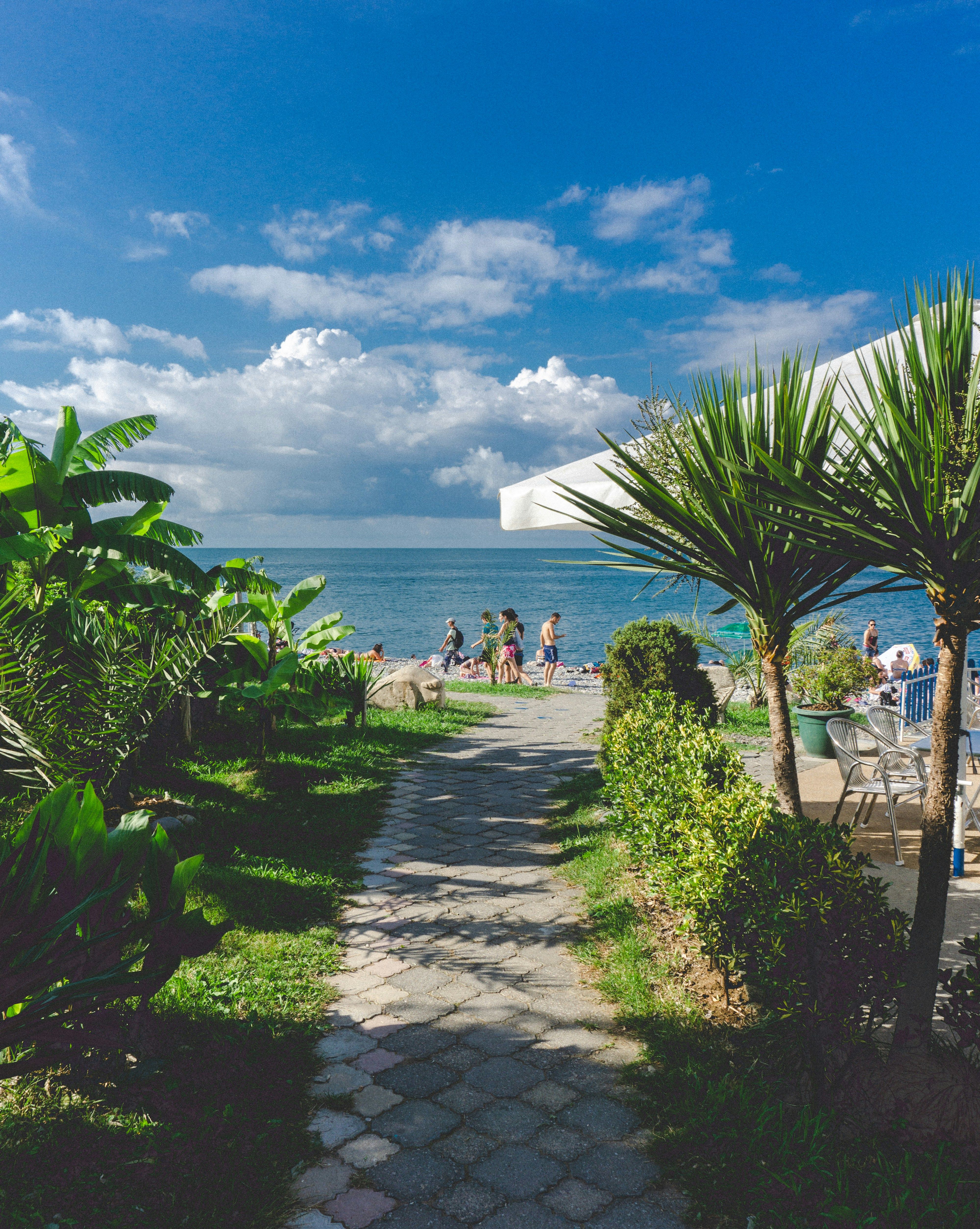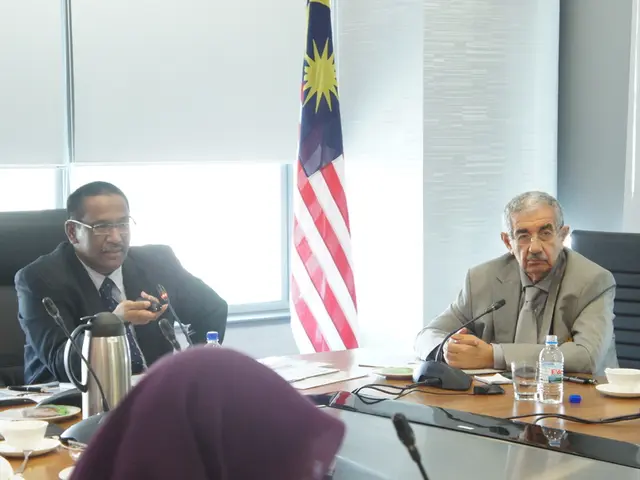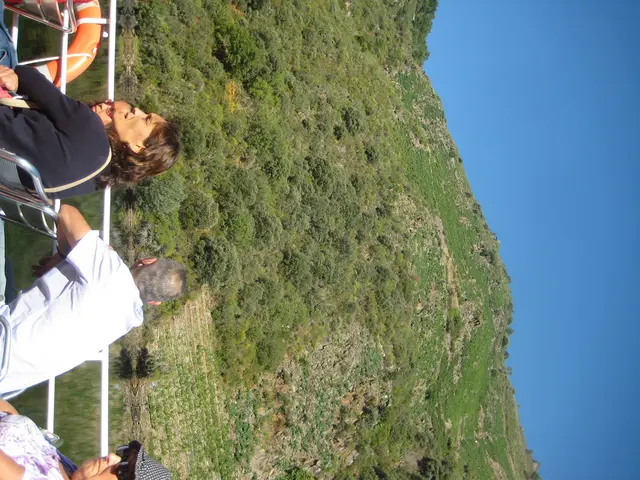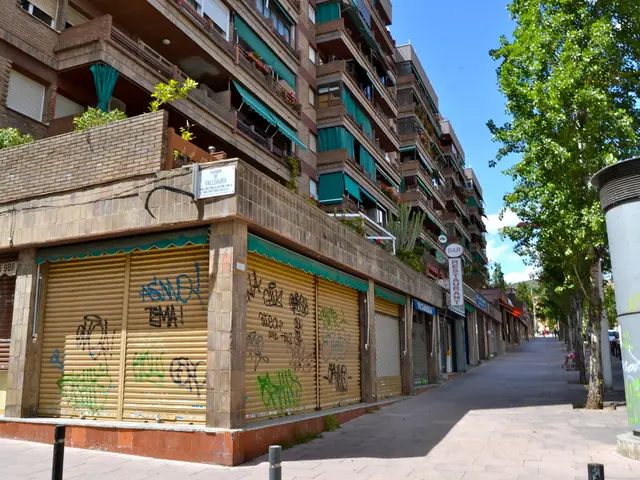Undercurrents Emerge Amidst Seeming Tranquility
Under the unforgiving sun, the Kok River gleams as it meanders through the provinces of Chiang Mai and Chiang Rai before merging with the Mekong River. Once a lifeline for local farms, fisheries, and tourism, the river now stirs fear and uncertainty.
Toxic secrets hide beneath the shimmer, with dangerously high concentrations of arsenic detected. The elderly villager Supin Kamjai, 63, stares sorrowfully at her withered crops in the quiet village of Ban Huai Kum, her voice empty, "We've stopped using river water, but what's the use now?" Her leathery hands gesture towards her failing harvest, meant to feed her family for months.
Neighboring advocate Boonchai Phanasawangwong echoes her concerns, "Our children play in the river, and now they have red, itchy rashes. Nobody has checked on us."
The unsettling situation worsened in late 2024 when the once-clear water turned muddy in Ban Kwae Wua Dam, triggering children to develop rashes. Similarly, farmers in Huai Chomphu noticed their crops wilting, even with daily watering. By early 2025, lab tests confirmed their suspicions: the river was polluted with high levels of arsenic.
The contamination was most severe in Mae Ai district, Chiang Mai, where arsenic levels reached 0.026 milligrams per liter (mg/L) — twice the safety standard of 0.01 mg/L. Lead was also found at 0.076 mg/L, exceeding the safe limit of 0.05 mg/L[FN1].
Dr. Amporn Benjaponpitak, Director-General of Thailand’s Department of Health, confirmed the presence of both arsenic and lead in the river. This toxic duo poses serious health risks, from skin rashes and diarrhea to long-term issues like cancer and neurological disorders[FN1].
The Sources
At the core of the crisis is illegal mining activity in Myanmar's Shan State, near the Kok River's source. Although not officially confirmed, environmental groups and researchers blame 23 suspected gold mining sites. These mines operate without thorough environmental impact assessments[FN2].
With each rain, the hills bear heavy sediment laden with arsenic and other toxic chemicals, which trickle down and pollute the Kok River system[FN2].
Sen Cheewapap Cheewatham, head of the Thai Senate Natural Resources and Environment Committee, points to satellite imagery indicating mining operations in the upper reaches of the river in Myanmar’s Shan State[FN2].
"These industries pose a risk of chemical contamination, as evident by the arsenic and lead in the water flowing to Thailand," Sen Cheewapap highlights[FN2]. He emphasizes the need for the government to quickly identify the origins of these chemicals and find a solution to the issue.
"We can't let another Klity Creek happen," he cautions, recalling the infamous 30-year lead contamination tragedy in Klity Creek of Kanchanaburi that poisoned generations of Karen villagers[FN3].
Suebsakul Kitnukorn, a lecturer at Mae Fah Luang University, also discovered arsenic contamination in other rivers: the Sai, Ruak, and Mekong, which flow through Chiang Rai's Mae Sai and Chiang Saen districts. Nine water samples collected in April 2025 showed arsenic exceeding safe limits in several locations, with the highest level recorded at 0.19 mg/L[FN4].
He voiced worries about potential risks if floodwaters cause contamination to affect local communities[FN4].
Arsenic in water is insidious and lethal; it is colorless, tasteless, and without smell[FN5]. Chronic exposure can lead to skin lesions, organ damage, cancer, and developmental issues in children.
Furthermore, tests conducted by the Environmental and Pollution Control Office in Chiang Mai revealed alarming levels of arsenic and other heavy metals in sediment samples collected from six spots along the Kok River, surpassing national limits. Other heavy metals like lead, nickel, and chromium were also present in excessive amounts[FN6].
Uprooted Lives
The ripple effects of contamination reach far beyond the health sector. For instance, the Karen Ruammit Elephant Camp, already struggling with the aftermath of severe floods in September, experiences an 80% drop in tourism as visitors shun river-based activities[FN7].
"No more bathing elephants in the river. No tourists, no income," says an elephant handler named Da.
Farmers such as Thanet Maneekorn in the same predicament watch in dismay as their crops wilt. With doubts on the safety of their well water, they resort to storing rainwater and digging shallow wells[FN7].
Tensions erupted on April 30, as residents from 13 affected communities in Chiang Rai submitted a petition to the Chiang Rai governor, demanding immediate testing of surface and groundwater, sediment, and farmland. They demanded transparency in reporting results, identification and resolution of contamination sources, medical checks, and community involvement in crisis response planning[FN8].
Boonsri Panasawangwong, a community rights advocate in Chiang Rai, emphasized, "The river is integral to our daily life, providing water and food. The ban on using the river has disrupted our livelihood."
A tipping point
Government authorities, facing mounting concerns and scientific evidence of widespread contamination, convened an urgent meeting on April 30. Chaired by Deputy Prime Minister Prasert Jantararuangtong, the session gathered ministries of Natural Resources, Public Health, Defense, and Foreign Affairs.
Deputy Minister of the Interior, Theerarat Samrejvanich, stressed the need for collaboration between agencies. The meeting also decided the Ministry of Defence and the Ministry of Foreign Affairs would gather information concerning gold mines in Myanmar[FN9].
"This is to speed up negotiations with the agencies responsible for granting mining permissions in Myanmar, to temporarily halt mining operations and improve mining practices," stated Deputy Minister Theerarat[FN9].
For families who have relied on the river's water for generations, the struggle for clean water marks only the beginning of a long battle to restore the river's lifeblood.
References:[FN1] https://www.bangkokpost.com/life/sunday/2586766/kok-river-polluted-with-arsenic-and-lead[FN2] https://www.bangkokpost.com/thailand/general/2587184/demand-for-urgent-pollution-response[FN3] https://en.wikipedia.org/wiki/Klity_Creek_disaster[FN4] https://www.bangkokpost.com/thailand/local/2586798/arsenic-detected-in-north-eastern-rivers[FN5] https://www.epa.gov/arsenic[FN6] https://www.bangkokpost.com/local-news/2587132/government-orders-investigation-on-arsenic-pollution[FN7] https://www.bangkokpost.com/travel/2587164/arsenic-in-river-hits-tourism[FN8] https://www.bangkokpost.com/thailand/general/2587153/mansudharm-protest-against-arsenic[FN9] https://www.bangkokpost.com/thailand/general/2587184/demand-for-urgent-pollution-response
- The Kok River, once a lifeblood for local villages, now holds toxic secrets, with dangerously high concentrations of arsenic detected.
- The elderly villager Supin Kamjai, 63, laments the loss of her crops and the uncertainty brought upon by the pollution.
- Neighboring advocate Boonchai Phanasawangwong shares her concerns about the children developing rashes after playing in the river.
- In late 2024, the river's once-clear water turned muddy, leading to wilting crops and suspicious lab tests revealing high levels of arsenic.
- Arsenic levels reached 0.026 milligrams per liter (mg/L) — twice the safety standard of 0.01 mg/L — in Mae Ai district, Chiang Mai, making it the most severely contaminated area.
- Lead was also found at 0.076 mg/L, exceeding the safe limit of 0.05 mg/L.
- The toxic duo of arsenic and lead poses serious health risks, from skin rashes and diarrhea to long-term issues like cancer and neurological disorders.
- Illegal mining activity in Myanmar's Shan State is at the core of the crisis, with 23 suspected gold mining sites blamed for the contamination.
- With each rain, the hills bear heavy sediment laden with arsenic and other toxic chemicals, which trickle down and pollute the Kok River system.
- Senator Sen Cheewapap Cheewatham points to satellite imagery indicating mining operations in the upper reaches of the river in Myanmar’s Shan State.11.These industries pose a risk of chemical contamination, as evident by the arsenic and lead in the water flowing to Thailand.
- Researcher Suebsakul Kitnukorn discovered arsenic contamination in the Sai, Ruak, and Mekong rivers as well, which flow through Chiang Rai's Mae Sai and Chiang Saen districts.
- Arsenic in water is insidious and lethal; it is colorless, tasteless, and without smell, making it difficult to detect.
- Chronic exposure can lead to skin lesions, organ damage, cancer, and developmental issues in children.
- Tests conducted by the Environmental and Pollution Control Office in Chiang Mai revealed alarming levels of arsenic and other heavy metals in sediment samples along the Kok River, surpassing national limits.





